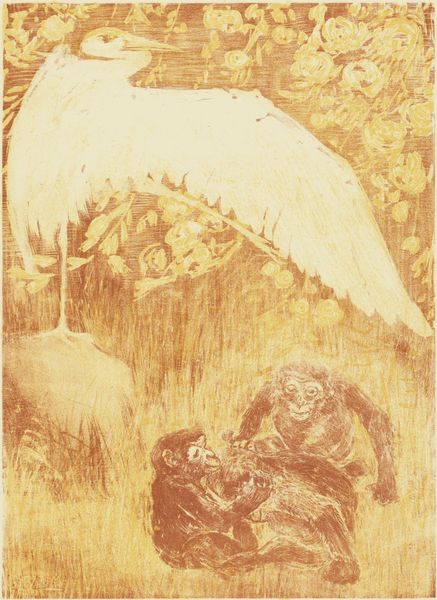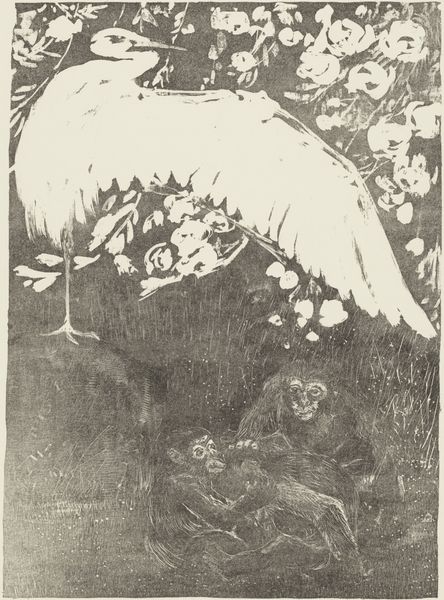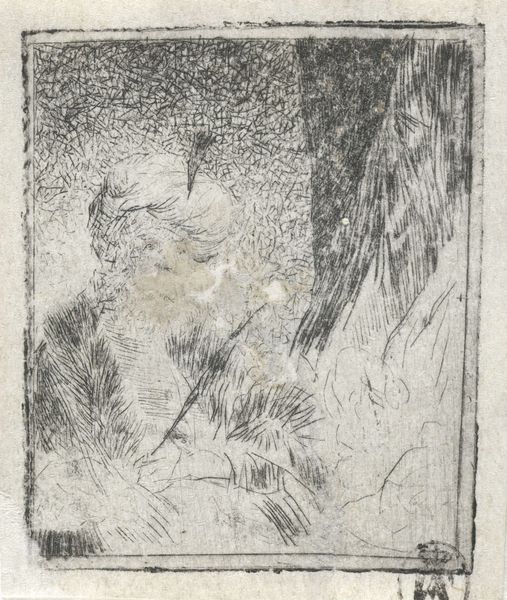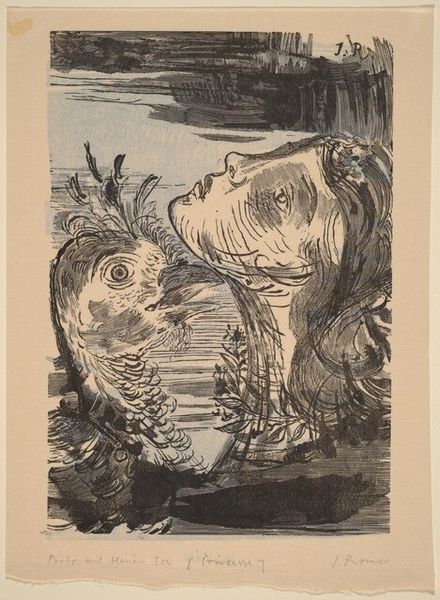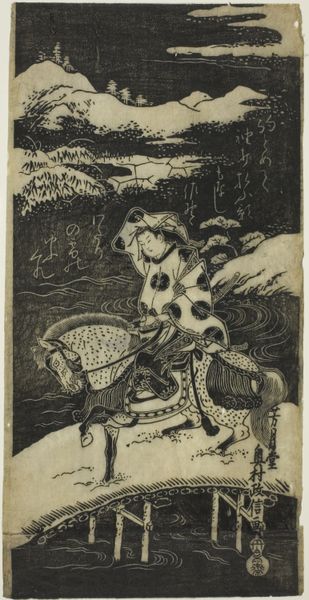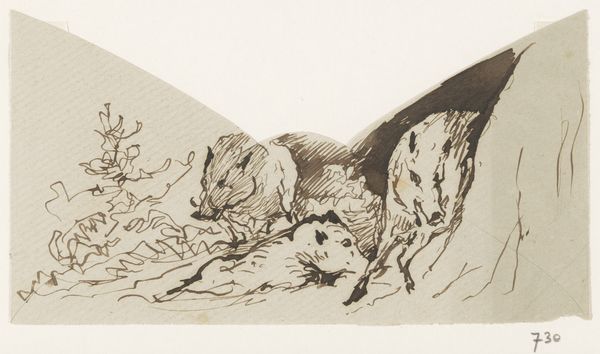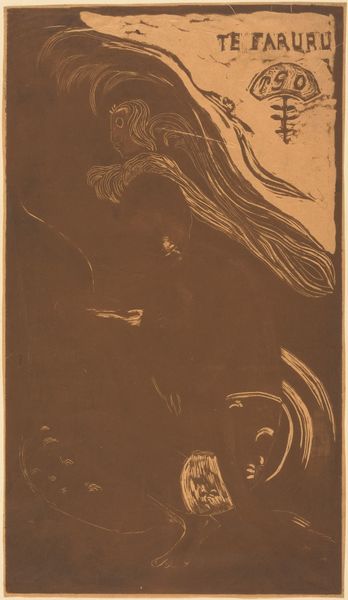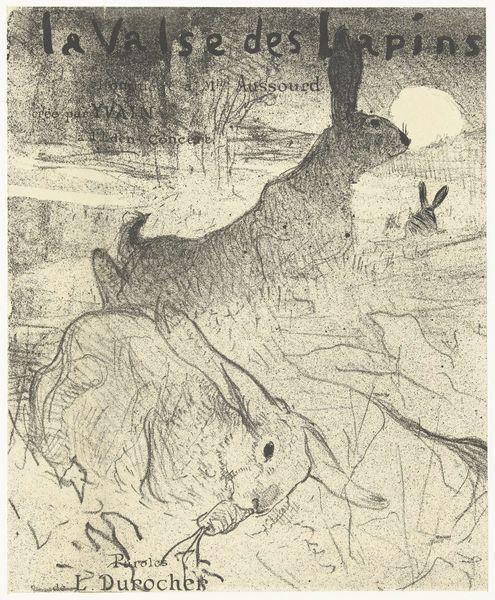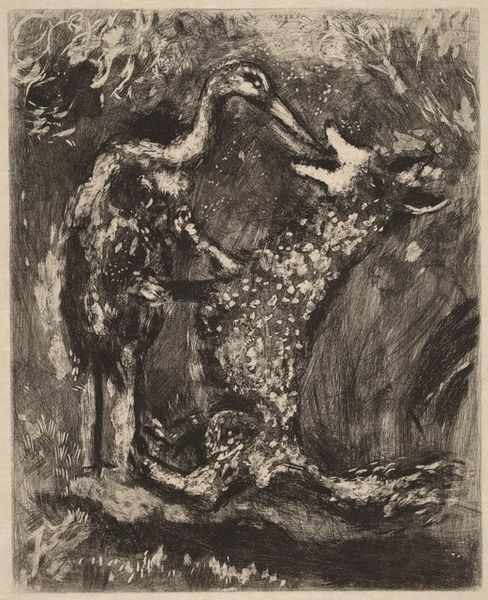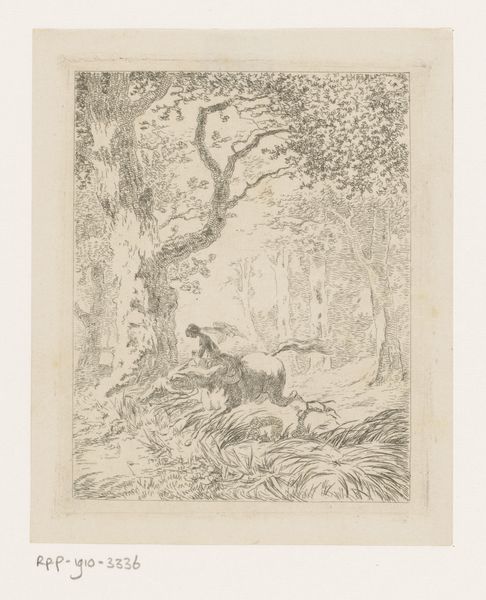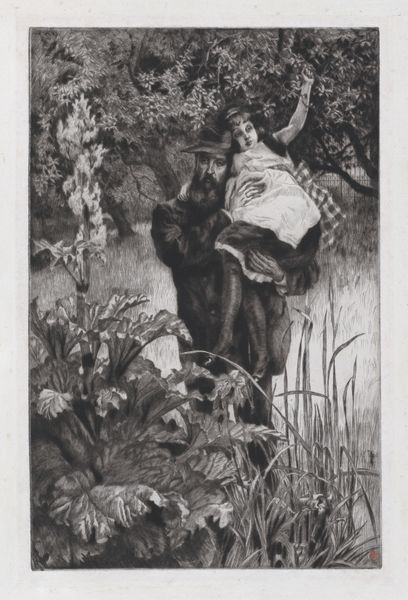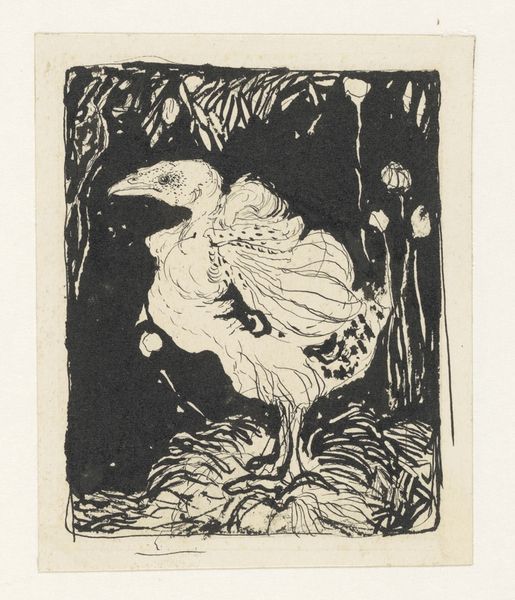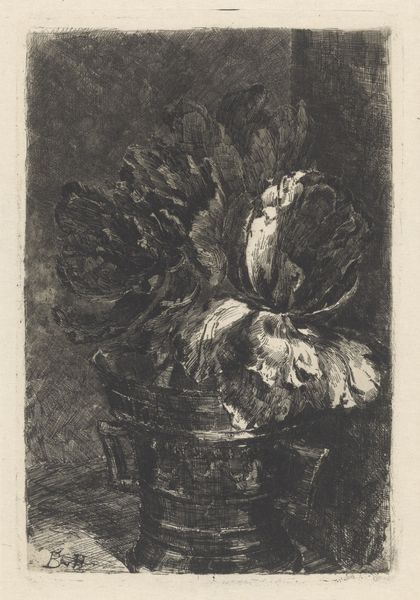
Dimensions: height 417 mm, width 293 mm
Copyright: Rijks Museum: Open Domain
Curator: This woodcut print, "Heron with Three Monkeys," was created by the Dutch artist Theo van Hoytema around 1905. It's currently held here at the Rijksmuseum. Editor: It has a strangely gentle and unsettling atmosphere. The wispy lines, the slightly muddied colours...it's both dreamlike and a bit melancholic. It reminds me of faded memories or half-remembered fables. Curator: That's an insightful observation. Van Hoytema was working in an era where artists were questioning societal norms. Animals in art, especially in prints like these, became a way to explore the human condition, perhaps to criticize or idealize aspects of society under the guise of fable or folklore. He situated himself among other symbolic artists of his day who used such tropes. Editor: Tell me more about the heron, perched so serenely above those monkeys. I get the feeling the animal imagery has profound significance. Herons can mean so many different things across cultures; wisdom, solitude, even longevity in some Eastern traditions. It also stands somewhat precariously, I would argue, looking almost translucent in places. It really gives an otherworldly, divine impression, not only by contrast, but also similarity: observe, for instance, the similar bone structure in the primates. Curator: Yes, precisely. The symbolism of the heron, juxtaposed with the monkeys huddled below, opens up discussions of hierarchy, perhaps a reflection of power dynamics within colonial structures. We can analyze it from the perspective of intersectionality, to understand how the relationship is commenting on dominant-subordinate group dynamics. Editor: Right, and monkeys are, of course, classic symbols. They can suggest mischief, imitation, but also family and community. The print is an ecosystem of established symbolic associations. Curator: Exactly. The style reflects broader shifts in thinking too. The delicate Impressionistic landscape points to a focus on emotion, subjectivity, and an interest in spiritualist explorations among many European artists around the turn of the 20th century. These undercurrents definitely challenge strict classifications of nature, culture and colonial relationships of dominance. Editor: It's remarkable how the artist captured this mood, with those faded but telling yellow flowers. Such careful layering of symbolic associations generates complex interpretation of culture through image. Curator: Agreed. It gives us ample ground to critically unpack lingering stereotypes and explore new possibilities of self-understanding, today. Editor: Absolutely, another look gives more insight to both image and meaning, always a joy.
Comments
No comments
Be the first to comment and join the conversation on the ultimate creative platform.
